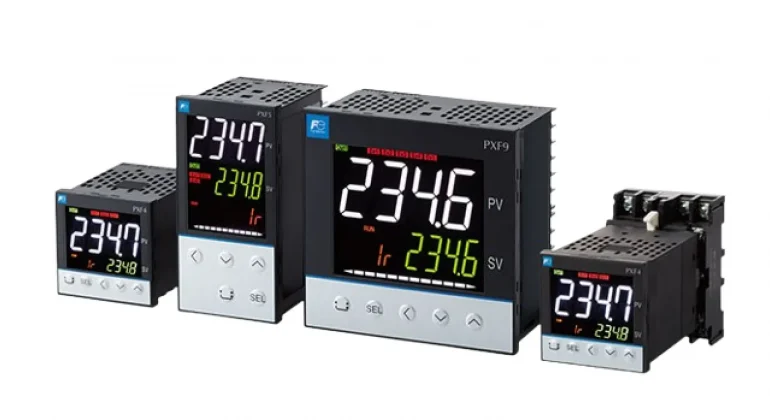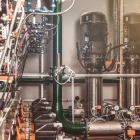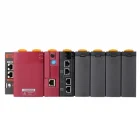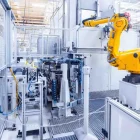Imagine enjoying a perfectly brewed cup of coffee or relying on the consistent performance of life-saving medical equipment. These seemingly different scenarios share a common factor: precise temperature control. In this regard, a temperature controller is crucial in many aspects of our lives, from ensuring food safety and optimizing manufacturing processes to maintaining comfortable climate control in buildings.
A temperature controller is an instrument used to maintain a desired temperature by measuring the temperature with a sensor and adjusting heating or cooling elements accordingly. It compares the actual temperature to a setpoint and then provides an output to a control element. These devices are integral to various industrial processes, ensuring optimal conditions for production, safety, and quality control.
Benefits of Temperature Control
Effective temperature control is essential for minimizing production waste and ensuring the quality of the final product. Monitoring temperatures during raw material storage, production, and logistics helps prevent costly mistakes. In industries such as chemical, incineration, and paper, precise temperature control is vital to prevent material damage and dangerous situations, including fires, explosions, and toxic gas releases.
Specific advantages of effective temperature control
-
- Waste Reduction: Precise temperature management minimizes errors and waste.
-
- Quality Assurance: Maintaining optimal temperatures ensures consistent product quality.
-
- Safety: Proper temperature control prevents accidents and ensures the safety of employees.
-
- Equipment Longevity: Preventing wear and tear on industrial equipment due to thermal shocks reduces maintenance costs and extends machinery service life.
Energy Efficiency: Automatic temperature controllers regulate energy consumption, reducing energy bills by adjusting operations based on need.
Pro-Tip: Implement over-temperature protection. Always consider that any part of the system has the potential to fail. In any application where physical injury or destruction of equipment might occur, install independent safety equipment with a separate temperature sensor to disable the heating circuit in case of overheating. The controller alarm signal is not designed to function as a protective measure in case of controller failure.
Types of Temperature Controllers
Temperature controllers come in various forms, each offering different levels of precision and functionality.
On/Off Controllers
These controllers use a simple mechanism to maintain temperature, turning a heating or cooling device completely on or off based on whether the temperature is above or below the setpoint. They are often used in home appliances and simple heating systems. However, they can lead to overshoot and oscillation around the setpoint.
Proportional (P) Controllers
Proportional controllers adjust the output based on the difference between the setpoint and the actual temperature, providing more continuous control than on/off controllers. This reduces overshoot but may result in a steady-state error or offset.
Proportional-Integral (PI) Controllers
By adding integral action, PI controllers eliminate the offset seen in proportional controllers, providing precise and stable temperature control. They are commonly used in industrial processes requiring tight control.
Proportional-Integral-Derivative (PID) Controllers
PID controllers include derivative action, which predicts temperature changes, allowing for fast response, minimal overshoot, and precise control. They are suitable for complex systems with rapid temperature changes.
Pro-Tip: Utilize auto-tuning for PID optimization. Use the auto-tuning functions (standard or low-SV type) to allow the controller to calculate optimal PID parameters. The low-SV type auto-tuning is particularly useful when you want to avoid overshoots.
Key Components of a Temperature Control System
A temperature-controlled system consists of several key components that work together.
-
- Sensor: Sensors, such as thermocouples, RTDs, and thermistors, measure the temperature. The choice of sensor depends on factors like temperature range, accuracy, and response time.
-
- Controller: The controller receives the signal from the sensor and calculates the necessary control output.
-
- Actuator: The actuator adjusts the heating or cooling power, using devices like heating elements, valves, or fans.
-
- Controlled Process: This is the system or environment where the temperature is being controlled.
Factors to Consider When Selecting a Temperature Controller
Selecting the right temperature controller involves considering several factors:
-
- Temperature Range: The operating range of the system.
-
- Accuracy and Precision: How close the controlled temperature needs to be to the setpoint.
-
- Response Time: How quickly the system needs to react to temperature changes.
-
- Type of Output: Compatibility with the actuator (e.g., relay, voltage, current).
-
- Control Algorithm: Selection of On/Off, P, PI, or PID based on process requirements.
-
- Communication Capabilities: Integration with other systems using protocols like Modbus or Ethernet.
-
- Cost: Balancing performance with budget.
-
- Ease of Use/Programming: How intuitive the controller is to set up and operate.
-
- Application-Specific Requirements: Safety certifications and environmental conditions.
Applications
Temperature controllers are used across various industries:
-
- Industrial processes (manufacturing, plastics, food processing).
-
- HVAC systems (heating, ventilation, and air conditioning).
-
- Refrigeration and cooling.
-
- Pharmaceutical manufacturing.
-
- Chemical processing.
-
- Food and Beverage.
Temperature controllers are essential tools for maintaining product quality, ensuring safety, and optimizing processes across a wide range of industries. Selecting the right controller requires careful consideration of the specific application requirements and key factors.
FAQs
What is a temperature controller and what does it do?
A temperature controller is a device used to maintain a desired temperature at a specified value. It works by measuring temperature with a sensor, comparing it to a setpoint, and adjusting heating or cooling elements to maintain the desired temperature.
What is “hysteresis” in the context of temperature controllers?
Hysteresis is a temperature band created between ON and OFF operations to prevent the output from frequently changing due to minute temperature changes. This helps to extend the life of the output relay and prevent unfavorable effects on connected devices.
What are some factors to consider when choosing a temperature controller?
Key factors include the required temperature range, the type of control action needed, the size of the controller, mounting requirements, and the environmental conditions the controller will be exposed to.
How can seasonal changes impact temperature control?
Temperature preferences evolve with the changing seasons. Implementing a flexible HVAC schedule that automatically adjusts settings based on outdoor temperatures ensures consistent comfort year-round. For home use, setting your thermostat to 85 degrees Fahrenheit, or turning the unit off while your house is empty in summer, can help your air conditioner run efficiently. In winter, setting your thermostat for 68 degrees to 72 degrees while your family is home is recommended.
Where should a thermostat be located for proper operation?
To operate properly, a thermostat must be on an interior wall away from direct sunlight, drafts, doorways, skylights, and windows.
About Fuji Electric Sales Philippines, Inc.
Fuji Electric Sales Philippines, Inc. works as the local representative of Fuji Electric Co., Ltd. from Japan. The company promotes, sells, and provides support for Fuji Electric products across the Philippines. Their work focuses on power electronics, automation, and energy-efficient technologies that help industries and infrastructure grow.
Our team of experts at Fuji Electric can help you select the right temperature controller for your specific needs. Contact us today for a consultation and let us help you optimize your processes for improved efficiency and quality:
Rickson Manalo
Assistant Sales Manager
0917-115 6102









